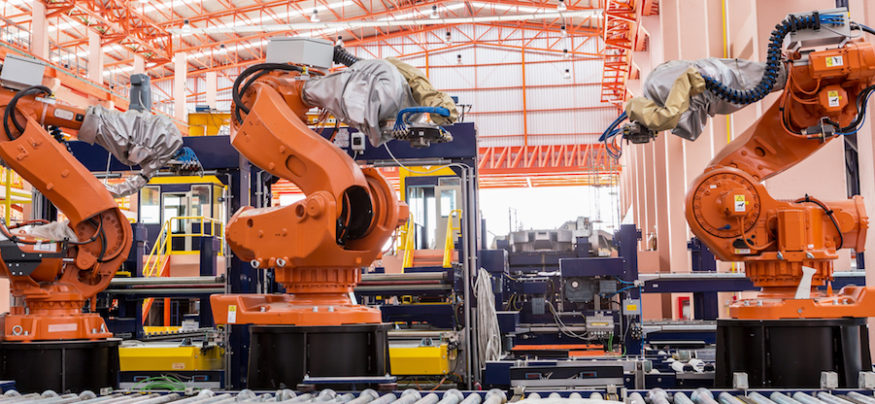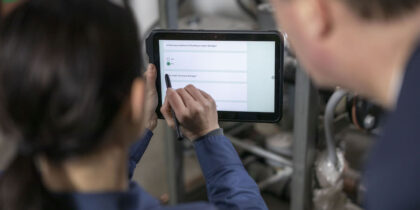Employee productivity is a key metric in the manufacturing industry and for the smart factories of tomorrow. Increased employee productivity means stronger morale, more customer-centric approaches to work and, therefore, increased manufacturing productivity.
A recent Kronos report outlined the many factors that play into this key performance indicator in lean manufacturing. Significant among the findings: A decisive 75 percent of employees surveyed said that better and more up-to-date technology would lead to greater employee engagement.
Smart factories are indeed leaning on cutting-edge technologies such as Industrial Internet of Things (IIoT), augmented reality (AR) and artificial intelligence (AI) to check on the health of their operating equipment. What’s more is these companies incorporate lean manufacturing principles, equipping their plant managers and floor production personnel with mobile devices that unlock the potential of these technologies and improve productivity.
Here are some of the ways that mobile improves employee productivity.
Mobile Reduces Unnecessary Movement
One of the key ways of increasing productivity is to keep the focus on production and decrease instances of unnecessary movement. A plant operator who will visit numerous batch processing units on any given day needs to record progress, take notes and identify any bottlenecks in production. Mobile devices such as the Samsung Galaxy Note9, equipped with an S Pen for easy gloved use, put powerful computing in the hands of plant managers wherever they go.
Modernize Your Factory With Mobile
Get your free guide to the mobile technologies that will accelerate your smart factory journey. Download Now
Managers need not walk back to a desktop at the main office every time they need to file a maintenance report. The plant personnel can take notes live on the shop floor and then dock the phone to a Samsung DeX station to convert the Note9 to a complete desktop experience with mouse and keyboard. The manager can then email suppliers or order service parts on the go, avoiding an extra work step at the end of the day. Mobile devices meet the workers where they are, saving time and increasing productivity.
Mobile Digitizes Data
The clutter of a paper trail can hinder worker productivity. Smart manufacturing companies are using mobile devices such as the Samsung Galaxy Tab Active2 to digitize paper forms and eliminate clipboards, No. 2 pencils and triplicate forms.
Enterprise asset management software apps on mobile devices, including wearables such as the Samsung Galaxy Watch, allow production personnel to scan barcodes on equipment and therefore check on maintenance schedules and set up routine repairs without having to record work orders on paper. Equally important, eliminating paper removes the issue of double-recording of information and other data entry errors.
Mobile Empowers Employees
How do you boost employee productivity? Increase employee engagement. Seventy-two percent of respondents in the Kronos report believe that employees in manufacturing need to feel more engaged. A strong enterprise mobile device management (MDM) system equipped with security protocols, such as Samsung Knox, can be a vital asset for employees in manufacturing, as they are able to access the information needed to do the job through one unified platform.
Such transparency into the production process gives everyone skin in the game and increases engagement. An additional benefit: transparency means bottlenecks and inefficiencies in operations management protocols have nowhere to hide. When production processes are digitized and the data is accessed by mobile devices, changeover times decrease, equipment has greater uptime and quality control is tighter.
Mobility is a key ally in the smart factory of tomorrow, because it delivers computer power where it’s needed in a portable form factor. As competitiveness drives leaner operations, powerful and versatile mobile devices help employees do more in less time.
Learn more about using mobile technology to modernize your factory with our free white paper.








